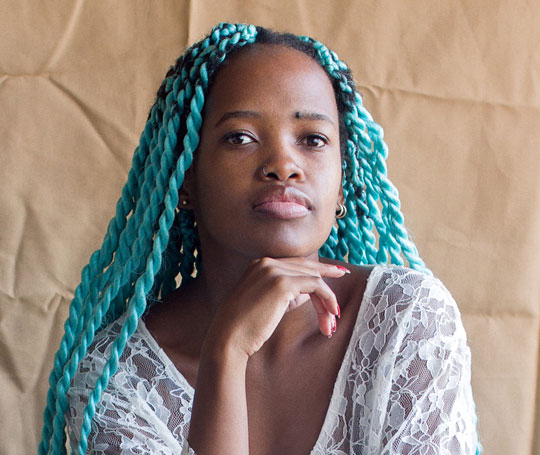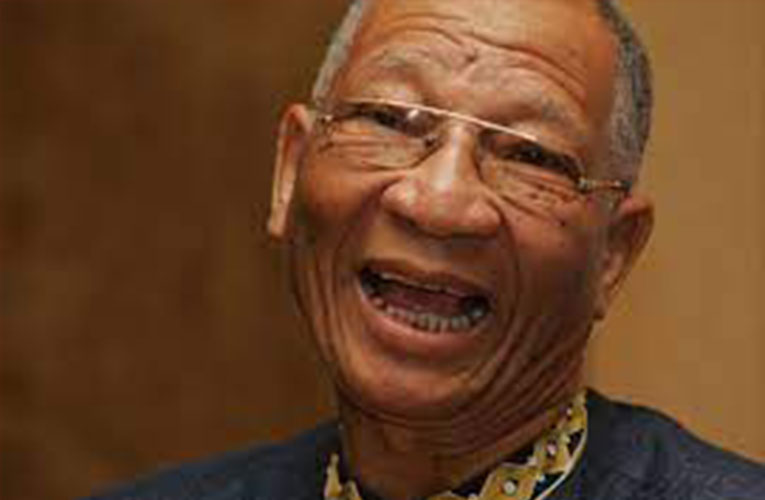The story of Arts & Culture Warrior Wall continues
By Tsholofelo Seleke

As September is celebrated as Heritage Month in South Africa, Arts &Culture Trust took a moment to reflect on the importance of identity, ownership, and culture.
The Arts & Culture Trust (ACT) continues to celebrate South African artistic icons who have contributed to their various fields over the past 50 years. This year in honour of Heritage Day, ACT has mounted the ACT Warrior Wall Heritage Day Exhibition in partnership with the Market Photo Workshop (MPW). The project draws on ACT Lifetime Achievement Award winners: Miriam Makeba (Music), David Koloane (Visual Art), Don Materra (Literature), Sylvia “Magogo” Glasser (Dance) and Dr. John Kani (Theatre).
These legends dedicated their lives to their craft. They have genuinely inspired and paved ways for many, both locally and abroad. A pertinent question to ask is: does their legacy still speak to today’s youth?
Five photographers from the MPW were selected to work on the project: Simphiwe Thabede, Zegugu Ngemntu, RemofiloeSebobe, Bongiwe Phakathi and Tsepiso Mahooe. The photographers had access to archival material from The Market Theatre that they could explore for each of the five legends. The intention of the project is to draw on these legends and create an installation that will generate conversation, celebrate, and reflect on our South African arts heritage. Photographer Buyaphi Mdledle and independent curator Thato Mogotsi, as well as Loyiso Oldjohn and Rolihlala Mhlanga assisted with the curatorial mentorship and production.
The collective of photographers drew from the legends they most resonated with. Zegugu Ngemntu used Glasser’s love for dance and applied it to her favourite genre, “Amapiano” – derived from the word piano, which is currently popular with the youth and making strides worldwide. During her process, she asked herself how Glasser would take on some of the genre’s dance moves. Glasser contributed to the field of dance, founding the iconic Moving Into Dance Mophatong where she taught and mentored disadvantaged youth. Her studio is still based in Newtown, which speaks well to the location of the first phase of the project. She created a unique dance language called “Afrofusion” by fusing African movement and ritual with a Western aesthetic.
“Amapiano” was also created through a blend of musical genres including jazz, deep house, and a bassline element. In addition to the series of photographs, she translated Glasser’s practice of movement by showing a video of her stills with an accompanying audio of an Amapiano song.
The work is seemingly in conversation with Mahooe’s photographs. A form of representation of her lived experience, the colourful images portray another side of people who live in shacks. Borrowing from Kani, our iconic theatre maker, Mahooe wanted to capture the sense of a stage set. As someone who also comes from the same space, she used Kani’s approach of accepting and being content with the situation you find yourself in; that the space you inhabit should not inform who you are and dictate your life. Kani used his strong sense of identity to speak to ownership and make theatre accessible to others who were also marginalised.
Representation and self-awareness are concepts Mahooe often works with. When asked what Heritage Day means to her, she found it quite strange that it is a single day to practice our culture. She added that culture should be practiced every single day as it is central in understanding who you are and that it is applicable daily.
Bongiwe Phakathi expressed the same sentiments regarding what Heritage Day meant to her. The legends that appealed to her were Makeba, Materra and Koloane. What stood out for Phakathi was how they had a love for their people. Makeba was passionate about people and their rights. She was a United Nations ambassador and civil rights activist. Mattera was also involved in fighting for black people’s rights. He was the founding member of the Black Consciousness Movement and joined the ANC Youth League.
Phakathi was interested in his autobiography, “Memory is the Weapon”. It speaks well with her concern around the issue of land in South Africa. With her photographs, she decided to borrow from Koloane’s practice and his use of colour as a painter. Although her landscapes are usually minimalistic and monochromatic, here she inserts blocks of colour above and below the organic landscapes.
Koloane also explored injustices and human rights. These are issues we are still dealing with today and the use of black and white in her series speaks to the timelessness of this issue.
Her photographs read well with Simphiwe Thabede’s collages. These were influenced by Koloane and Makeba. As a photographer, she wanted to disrupt her comfort zone and make a blend of digital and analogue collage work. Koloane explored the city as a subject and described it as a patchwork. He was also dedicated to equipping black artists with skills, resources, and space to practice. This gave birth to The Bag Factory, based in Newtown.
Thabede’s collages use Johannesburg’s iconic structures and place them with images of people that are not necessarily from the country but more representative of Africa. A sense of displacement is evident not only in the form of artistic work but also in the content itself. Makeba is a figure that speaks well to this as she was exiled from her own birth country and became “Mama Africa”. Representation and identity are common threads in Thabede’s work. These are also the words she used to express what Heritage Day means to her.
Remofiloe Sebobe wears an additional hat: she was also involved in the curatorial aspect of the project. She works with portraiture, and it was quite fitting how she approached her prints. The prints are found/existing portraits of all the legends She then hand-drew protea flowers, scanned them and placed them around the portraits. They resemble South African money which is what Sebobe wanted to explore: art as a currency, a currency perhaps not given its true worth in South Africa.
Time was a huge factor in the photographers’ processes. Most had to shift their usual way of art making, which was quite intense. Their Whatsapp group functioned as more than a tool of communication – it helped solidify the sense of community, provided a safe space to speak about their work and common interests around identity and representation.
Each of them organically selected legend(s) that spoke to them respectfully. Whether inspired by their practice or how they related to them, they were able to speak to ideas that shape today’s social and artistic context. The legends’ contributions will serve as monumental legacies and will constantly remind us of the importance of relevance, especially in relation to the youth.
The exhibition, supported by the EU Delegation to South Africa, was at the Market Photo Workshop, Newtown closing in October 2021. Please visit the ACT Warrior Wall and help encourage young talent while paying homage to South African icons. For further information visit the Trust’s website, www.act.org.za or follow us on Twitter and Facebook. #ACTWarriorWall.
.Tsholofelo Seleke graduated at the Witwatersrand University with a BAFA (honours). She is interested in ideas around access, collectivity and ownership. Seleke is currently exploring language as tool of power, through Dianne tsa seTswana. As a predominately a performance and installation artist, her research is practice and process based.










